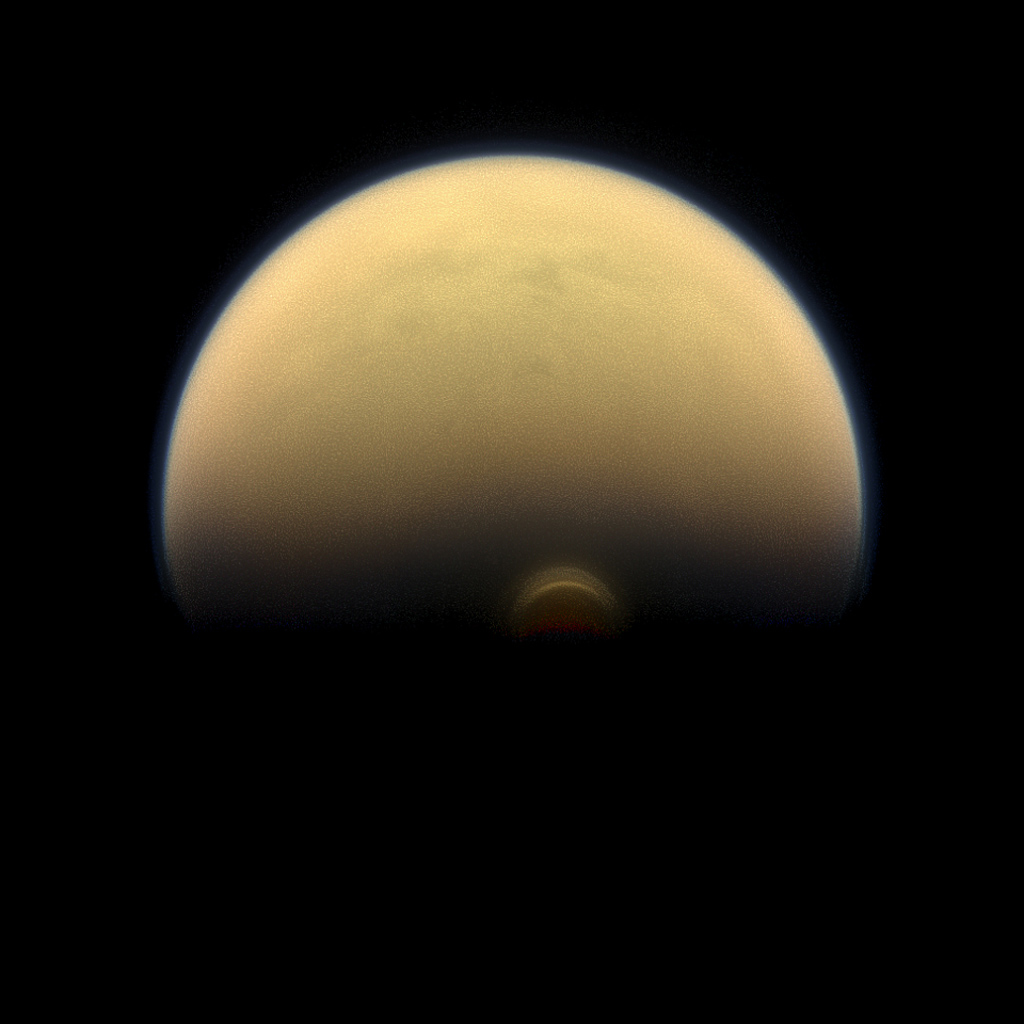On Titan, the Polar Vortex Can Last a Shiver-Inducing 22 (Earth) Years

And you thought unpredictable spring temperatures were annoying: On Saturn's moon Titan, chilly polar vortex periods can last to the summer solstice.
That's according to new research looking at the polar vortex on the only moon to sport a thick atmosphere like Earth's. When NASA's Cassini mission arrived at the Saturn system in 2004, scientists found a huge patch of cold air under low pressure at the moon's north pole. As the Earth-years passed and Titan's seasons gradually changed, the spacecraft even saw the birth of a vortex at the other pole. Patching those observations together, the new study attempts to understand how these structures develop, mature and dissipate.
"Why it's so interesting is that Titan is like a mini Earth with a really exotic and cold atmosphere that we can use to test climate models and things like that," Nick Teanby, a planetary scientist at the University of Bristol in the U.K. and lead author of the new research, said in a statement. "That's the big picture to why we bothered, but I guess the real motivation is just that it's really cool to try and figure this stuff out."
Related: Saturn's Moon Titan May Have 'Phantom Lakes' and Caves
Cassini wasn't able to spend a full Titan year at the moon. Instead, the spacecraft caught the latter part of the northern polar vortex. But that lasted all the way until the equivalent of the summer solstice. That would make the full phenomenon last about 22 Earth years.
Then, the spacecraft saw the beginnings of the same structure's formation at the south pole. Scientists were surprised to find that the early south polar vortex was much colder than the late-season northern polar vortex, so Teanby and his team wanted to investigate.
Please do not remind me of this 22-year nightmare polar vortex when I complain every winter. (gif credit: NASA/JPL-Caltech/Space Science Institute, story: https://t.co/lCgD9HHSuK) pic.twitter.com/5LUYEeEnDwApril 22, 2019
Titan's atmosphere isn't a perfect clone of Earth's — although both are mostly full of nitrogen, Titan's is also sprinkled with methane. It's that compound that falls out of the sky as rain on Titan, not water. And in the upper layers of Titan's atmosphere, where sunlight can reach that methane, it can trigger reactions that produce even stranger gas compounds.
Get the Space.com Newsletter
Breaking space news, the latest updates on rocket launches, skywatching events and more!
What Teanby and his team found was that those exotic gases were more prevalent in the early winter and could be contributing to added chill in the early days of the polar vortex. "Earth cools in winter due to lack of sunlight over the poles, but you don't get this added effect from extra gases, whereas on Titan you've got these weird gases in there that's making the process even more extreme than it would be otherwise," Teanby said.
Although scientists still have plenty of Cassini data to analyze from the spacecraft's visit to the Saturn system, it will be many years before any mission can watch an entire Titan seasonal cycle play out. NASA is considering selecting a mission to the moon later this year, but even that spacecraft wouldn't arrive until 2034.
- NASA May Decide This Year to Land a Drone on Saturn's Moon Titan
- Amazing Photos: Titan, Saturn's Largest Moon
- Dazzling Views Show Saturn Moon Titan's Surface Like Never Before
Email Meghan Bartels at mbartels@space.com or follow her @meghanbartels. Follow us on Twitter @Spacedotcom and on Facebook.
Join our Space Forums to keep talking space on the latest missions, night sky and more! And if you have a news tip, correction or comment, let us know at: community@space.com.

Meghan is a senior writer at Space.com and has more than five years' experience as a science journalist based in New York City. She joined Space.com in July 2018, with previous writing published in outlets including Newsweek and Audubon. Meghan earned an MA in science journalism from New York University and a BA in classics from Georgetown University, and in her free time she enjoys reading and visiting museums. Follow her on Twitter at @meghanbartels.










